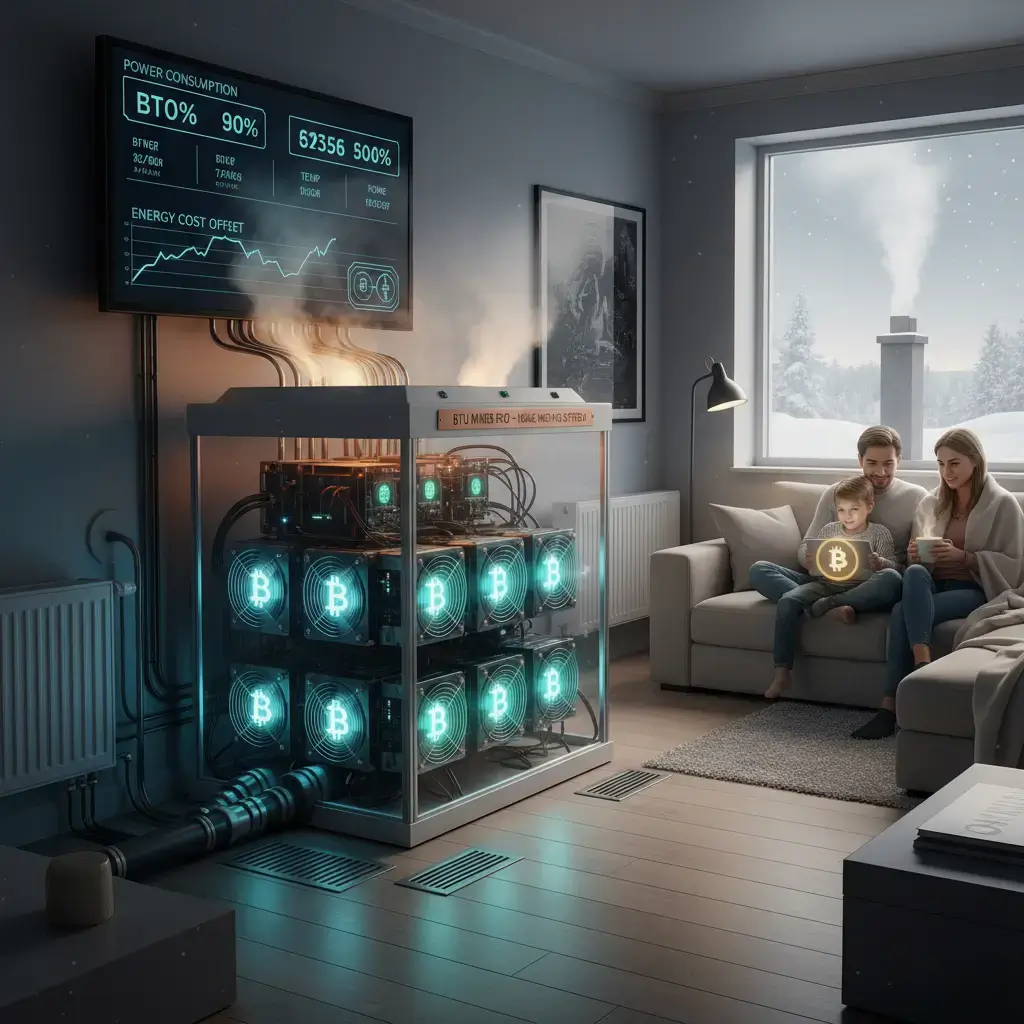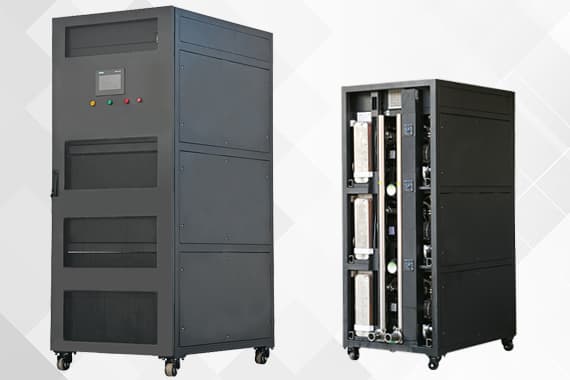Bitcoin mining, traditionally seen as an energy-intensive and sometimes controversial practice, is finding a surprising new use: heating homes. While mining has long been associated with server farms and data centers, a growing number of homeowners are turning their mining rigs into cost-effective heat sources. In this guide, we explore how you can leverage Bitcoin mining to heat your home, the practicalities involved, and whether it’s a sustainable, economical choice for your household.
What is Bitcoin Mining?
Bitcoin mining refers to the process by which new bitcoins are created and transactions are verified on the Bitcoin network. It involves solving complex mathematical puzzles using powerful computing hardware known as miners. These miners, typically ASIC (Application-Specific Integrated Circuit) devices or high-performance GPUs (Graphics Processing Units), compete to add blocks of transactions to the Bitcoin blockchain.
Energy Consumption and Heat Production
Mining rigs are notorious for consuming large amounts of electricity. In fact, the energy consumption of Bitcoin mining operations is so high that they have been criticized for their environmental impact. However, the heat generated from these operations is a byproduct that can be harnessed for heating purposes.
How Bitcoin Mining Generates Heat
Bitcoin mining hardware works tirelessly to solve cryptographic puzzles, and in the process, they produce an immense amount of heat. When electrical energy is consumed by mining equipment, a large portion of it is converted into heat instead of useful computation, much like how a light bulb emits heat as a byproduct of light.
The Role of Energy Usage
The high energy demands of mining rigs (ranging from 1,000 to 3,000 watts per unit) mean that they are continuously emitting heat while they operate. This heat is constant and can be redirected into heating your home, providing an additional benefit to offset the mining costs.
Using Mining Rigs to Heat Your Home
If you are considering using Bitcoin mining as a heating solution, the process involves setting up your mining equipment in a way that takes advantage of the heat it produces.
Setting Up a Mining Rig for Heating
Location: Choose a space that requires extra heating, such as a basement, garage, or an under-heated room. The mining rig will serve as an additional heat source.
Ventilation and Airflow: Proper ventilation is crucial. Ensure that your mining rig is in an area where it can be well-ventilated to avoid overheating. Circulating the warm air into your home can be achieved through ducts or strategically placed fans.
Energy Consumption vs. Heat Output: To determine if this is a cost-effective solution, you need to calculate how much heat your rig will provide compared to traditional heating methods. For example, a 3,000-watt mining rig can generate about 10,200 BTUs per hour (roughly equivalent to a small space heater).
Cost Considerations
While Bitcoin mining can theoretically reduce heating costs, it’s important to weigh the expenses carefully. Bitcoin mining requires a constant supply of electricity, which is typically more expensive than standard heating methods, especially if you’re relying on grid power. However, the value of the mined Bitcoin can offset these expenses—if the price of Bitcoin remains high.
Safety Tips
Operating mining rigs in your home requires special attention to safety:
Ensure your electrical wiring can support the power demands of the mining rig.
Install smoke detectors and fire extinguishers near the rig.
Avoid overloading circuits to prevent electrical fires.
Maintain your mining hardware to avoid overheating issues.
Choosing the Right Equipment for Home Heating
There are several types of mining hardware, each with varying energy efficiencies and heat production rates. When selecting the right equipment for home heating, consider both energy consumption and Bitcoin mining profitability.
ASIC Miners vs. GPUs
ASIC Miners: These are purpose-built devices designed specifically for mining cryptocurrencies like Bitcoin. ASIC miners are more energy-efficient than GPUs and produce a significant amount of heat. However, they can be costly and may not be as versatile for other types of cryptocurrency mining.
GPUs: While less efficient for Bitcoin mining, GPUs are used in mining altcoins and can also produce heat. They might be a good option if you want flexibility in mining different cryptocurrencies.
Efficient Rigs for Maximum Heat
Some rigs are designed with higher energy efficiency in mind, which helps reduce your energy bill while maximizing the heat output. Look for mining rigs with efficient cooling systems that don’t require additional energy to maintain optimal temperatures.
Placement and Storage
The placement of your mining rig is crucial for both performance and heat distribution. Consider placing the rig in a basement or an area that needs additional heating, but avoid confined spaces without airflow. Use insulated walls to help retain the heat generated by the mining rig.
Environmental and Economic Impact
Bitcoin mining often faces criticism for its energy-intensive nature. However, the environmental and economic impacts can be mitigated by using renewable energy sources and maximizing efficiency.
Energy Efficiency
To reduce the environmental impact of Bitcoin mining, consider integrating renewable energy sources into your setup, such as solar panels or wind turbines. This approach can offset the carbon footprint of your mining operation and make the heating process more sustainable.
ROI on Heating Costs
Using Bitcoin mining for heating can be cost-effective in the long run, particularly in areas where electricity is relatively cheap. By comparing the ongoing costs of electricity with the potential value of mined Bitcoin, you can determine if this method will save you money in the long term.
Challenges and Limitations of Heating with Bitcoin Mining
While Bitcoin mining for heating sounds promising, it’s important to acknowledge some of the challenges:
High Initial Investment: The upfront costs of purchasing mining equipment can be significant. Depending on the hardware, it may take months or even years to recoup your investment.
Fluctuating Bitcoin Value: The profitability of Bitcoin mining is directly tied to the price of Bitcoin, which is highly volatile. If the price drops significantly, your mining operation may no longer be profitable.
Noise and Maintenance: Mining rigs are noisy, and their maintenance requires attention to cooling systems, hardware updates, and repairs. Consider how the noise may affect your living environment.
Regulatory Concerns: In some areas, cryptocurrency mining may be subject to regulations or taxes. Be sure to check local laws before starting a mining operation.
Case Studies: Real-World Examples of Mining for Heat
Case Study 1: A Canadian Homeowner’s Experience
A homeowner in Ontario converted their basement into a Bitcoin mining operation. By strategically placing three ASIC miners in the basement, they were able to generate both heat and profit, reducing their overall heating bill by 30%. The miner also used a small solar panel system to supplement their electricity needs, making the operation more sustainable.Case Study 2: A Swedish Apartment Turned into a Mini Mining Farm
In Sweden, a tech enthusiast transformed their apartment into a mini mining farm, heating the living space while mining for Bitcoin. The rig, consisting of several GPUs, produced enough heat to warm the apartment throughout the winter months. Although the noise was a concern, the cost savings on heating made it a worthwhile venture.
Is Heating Your Home with Bitcoin Mining Worth It?
Heating your home with Bitcoin mining can be a viable option for some, especially if you live in an area with cheap electricity or access to renewable energy sources. The ability to generate heat while mining Bitcoin provides a dual benefit, but it requires a careful balance of initial investment, ongoing energy costs, and the volatility of cryptocurrency markets.
Conclusion: The Future of Bitcoin Mining for Home Heating
As cryptocurrency mining continues to grow, the potential to use it as a viable heating solution could revolutionize how we think about energy consumption. However, it’s important to consider all aspects—economic, environmental, and practical—before committing to this method. The future of Bitcoin mining for home heating will depend on advancements in energy efficiency, the price of Bitcoin, and the integration of renewable energy sources.
FAQs About Heating Your Home with Bitcoin Mining
Can Bitcoin mining really replace my home heating system?
Bitcoin mining can serve as an additional heat source but may not completely replace traditional heating systems, especially during extremely cold weather.
How much money can I save by using Bitcoin mining for heat?
The savings vary depending on electricity costs, mining profitability, and the size of your setup. It’s best to calculate based on local conditions.
What’s the most energy-efficient mining rig for heating my home?
ASIC miners are typically more energy-efficient than GPUs for Bitcoin mining and produce more heat.
Is it safe to run a mining rig in my home?
With proper ventilation, electrical safety measures, and regular maintenance, it can be safe. Be sure to monitor the setup carefully to avoid fire hazards.





